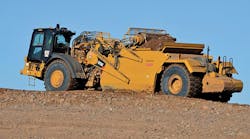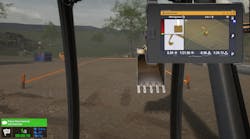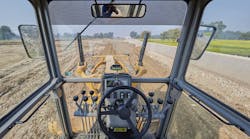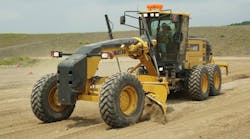Thread from HeavyEquipmentForums.com:
User #1: I have about 1,000 hours on a motor grader. I have a good feel for it. I'm trying to improve the way that I go about moving the material. I was wondering if you can help me with some operating techniques.
For instance, I went to a new job with 4 inlets and a high point in the middle of the road; I know to keep my runs long, but it is hard for me to define the ridge points by making those long runs. It's easier for me to dish out the inlets first, then make longer runs touching it up.
If you had a parking lot with inlets flowlines high points, you would start at the lowest points and work your way to the high points right?
User #2: Go slow, take your time, keep the controls close to you, and don't mess with the dirt too much.
User #3: We can tell you everything you need to know, but not all of it will work for you. You have to find the tricks that work for you.
When I build a lot like that, [I] go about defining my low points, usually a catchbasin, and then work up from there. Push outward and upward till I get to my high point. If I [have] several of them, I work them in sections, first one then the next, as long as I can keep upto the trucks hauling in material.
User #4: It's a tough call to give specific advice on a job without actually seeing it. Way too many variables, and it's rare to find two operators that do things the same. That said, I can share some advice or tips of things I've learned along the way.
Patience really is the virtue of a good finisher, and that saying of experience is the best teacher is so true. One of the best grader operators I've ever had the privilege to have worked and learned from once told me that he only really felt 100% confident after about 7 years of finishing under his belt.
Visualization is also very important. It really helps to have a mental picture as a goal to achieve. Again, this takes time and experience.
User #5: Working with graders is a pretty individual thing. However, a few basic rules do apply. 1) Work the material no more than you have to. 2) Slow and steady does it, at least until you get really good at it. Good grade checkers are worth their weight in gold and the quicker they are, the better they make you look. 3) Good compaction makes trimming easier. I personally don't bother too much with keeping material on my blade when trimming. I'd rather have it well compacted and use a bit of weight on the blade to steady it all. You may even have to roll the blade forward a bit to cut more easily, but you aren't then carrying big mobs of material for long distances.
HeavyEquipmentForums.com is a user forum where professionals in the heavy-equipment industry can exchange ideas and post questions or comments regarding equipment and related topics. Users include owner/operators, operators, company owners, repair technicians, safety officers and others. Posts have been edited for clarity and content.





